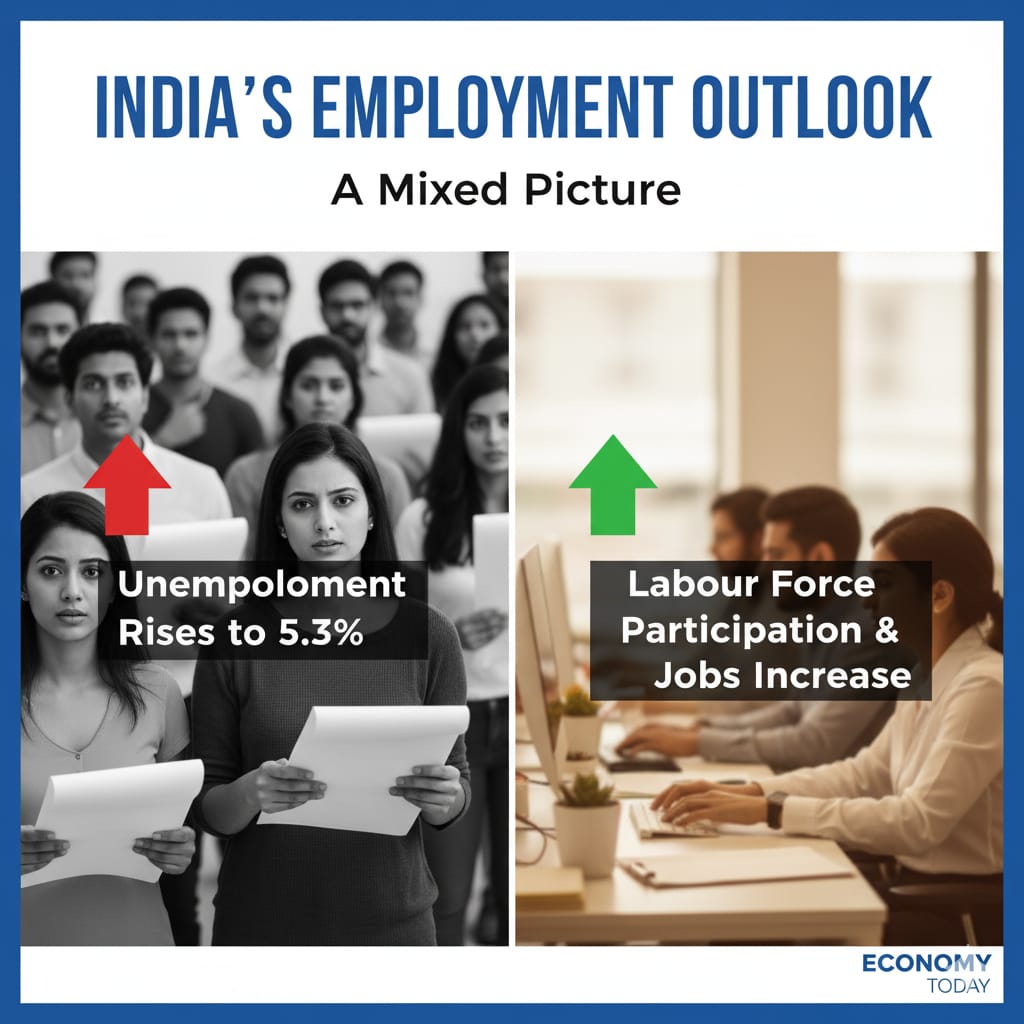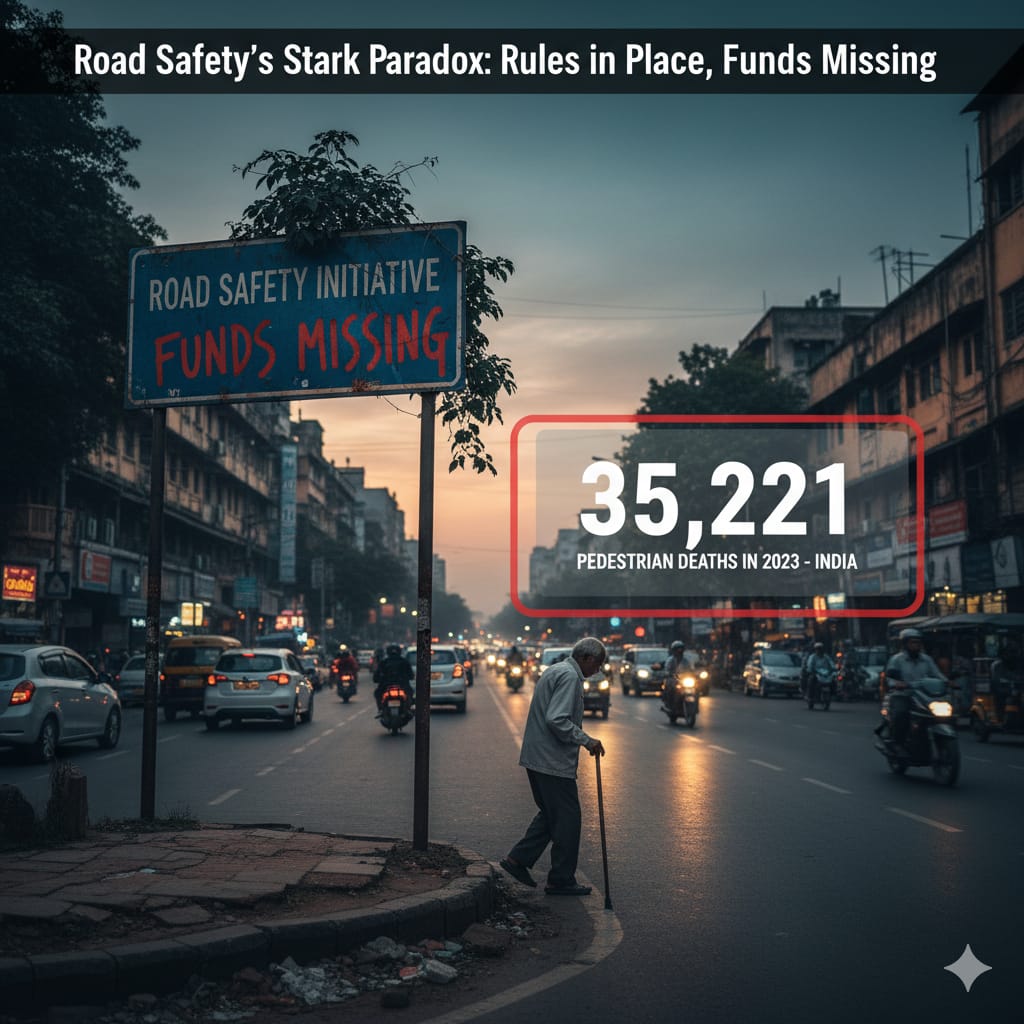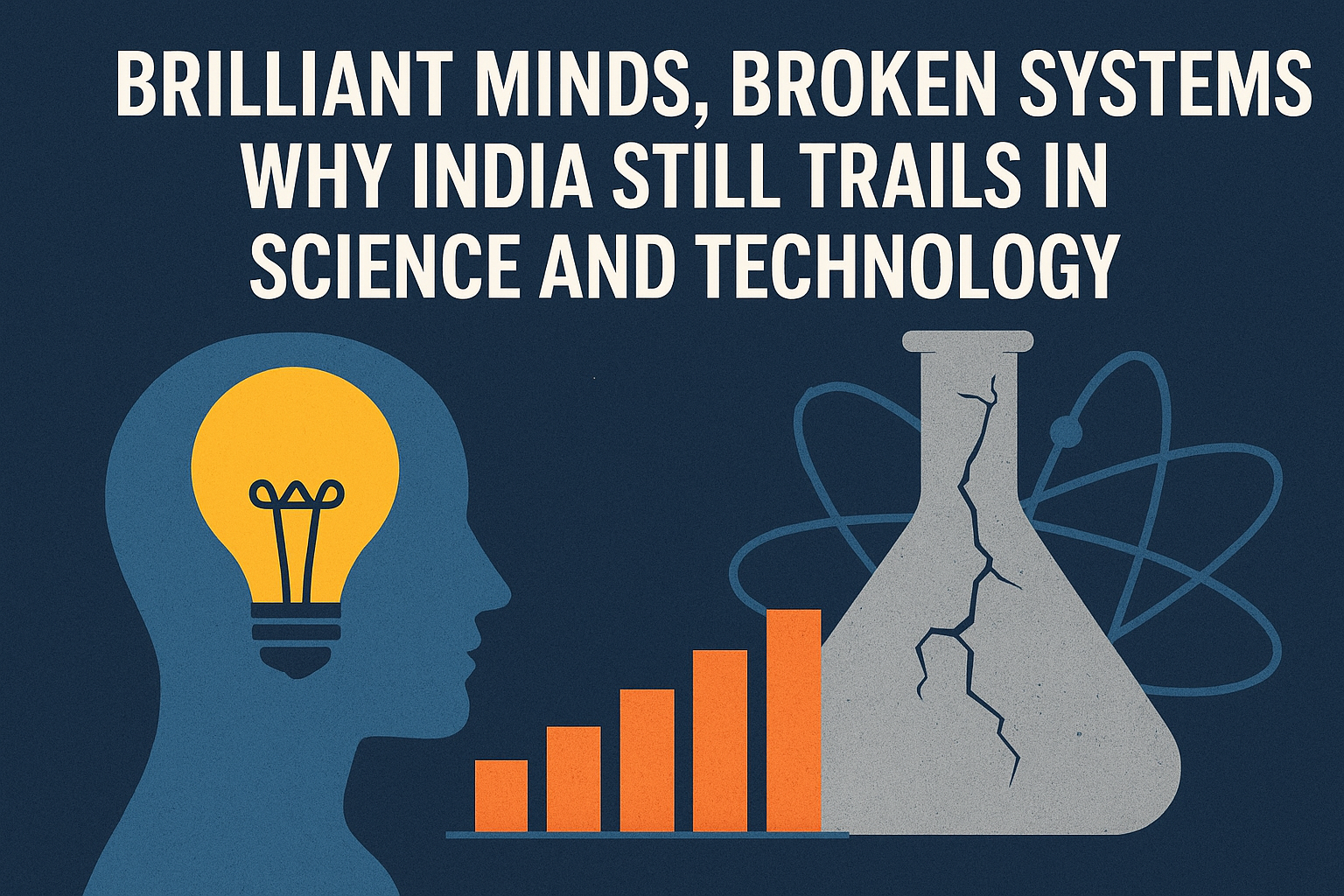
The dynamics of India's labour market remain a critical barometer of its economic health, and the latest data from the Periodic Labour Force Survey (PLFS), published by the National Statistics Office (NSO), presents a complex narrative. The headline figure indicates a moderate setback that the all-India unemployment rate (UR) has increased to 5.3% in September, a jump from 5.6% reported in June. This sequential rise signals a mixed trend, one where job creation, while ongoing, is struggling to keep pace with the increasing number of people actively seeking employment.
Decoding the Key Labour Indicators
To fully understand the employment scenario, it is essential to examine the components driving this change. The PLFS data uses three primary metrics: the Unemployment Rate (UR), the Labour Force Participation Rate (LFPR), and the Worker Population Ratio (WPR).
Unemployment Rate (UR)
The rise in the unemployment rate from its lowest value in the monthly series before August to 5.3% in September indicates that a greater percentage of the labour force was unable to find work. This sequential rise of twenty basis points (0.20 percentage point) from the previous month is a subtle but significant shift. It suggests that while the economy may be generating jobs, the demand for work is outpacing the supply, leading to a higher rate of joblessness among those actively in the labour market.
Labour Force Participation Rate (LFPR)
The increased UR is accompanied by a concurrent rise in the Labour Force Participation Rate (LFPR), which represents the share of the population that is either working or actively looking for a job. The LFPR increased by 30 basis points from August to 41.8% in September, marking the second highest value in the monthly series after April (which was 42%). This increase is crucial as it suggests a positive trend: more people are entering the labour force, reflecting greater optimism about finding a job or simply a necessity to work. However, the accompanying rise in the UR "paints a mixed picture," indicating that while more people are seeking work, the economy is not absorbing them all immediately.
Worker Population Ratio (WPR)
The third key indicator, the Worker Population Ratio (WPR), measures the share of employed workers in the total population. This is arguably the most direct measure of employment generation. The WPR improved to 39.6% in September, a 20 basis point increase from August, and the second highest figure in the series after April (which was 39.8%). This metric suggests that jobs are being created, as the employment share in the population is rising. The fact that the WPR has risen simultaneously with the UR suggests that the number of new workers entering the labour force (as reflected in the rising LFPR) is greater than the number of newly created jobs, leading to a marginal increase in the number of unemployed individuals.
The Rural-Urban Divergence
The data also points to a notable divergence in employment trends between rural and urban areas. In September, the unemployment rate in rural India stood at 4.6%, while the rate in urban India was significantly higher at 6.8%. This disparity highlights the differing economic structures and job market challenges in the two regions. Urban areas, often the engine of formal employment, services, and industry, appear to be facing a greater challenge in providing jobs to their labour force, potentially due to sluggish growth in white-collar sectors or the seasonal nature of some urban economic activities. The urban rate is nearly 2.2 percentage points higher than the rural rate, demanding specific policy focus to address job creation in metropolitan and semi-urban centres.
Interpreting the Trends and Challenges
The sequential movements in the employment data reveal a market in flux. The rise in both LFPR and WPR is generally a healthy sign, confirming that jobs are increasing and that labour force participation is growing. However, the accompanying uptick in the unemployment rate acts as a critical signal, indicating a persistent challenge that the rate of job creation is not sufficient to fully absorb the surge in the labour force.
This dynamic can be partially attributed to the seasonal nature of some jobs, particularly in sectors like agriculture, and the difficulty in comparing monthly data since the series is relatively new. Nevertheless, the numbers underscore the urgency for sustained, high-quality job creation. For India to harness its demographic dividend, policymakers must not only boost overall economic growth but also target interventions that translate into formal, productive, and sustainable employment opportunities for its rapidly expanding working-age population. The mixed picture for September serves as a clear reminder that the journey toward full employment is an ongoing challenge requiring strategic and data-driven solutions.





.jpeg)






.jpeg)


.jpeg)




.jpeg)